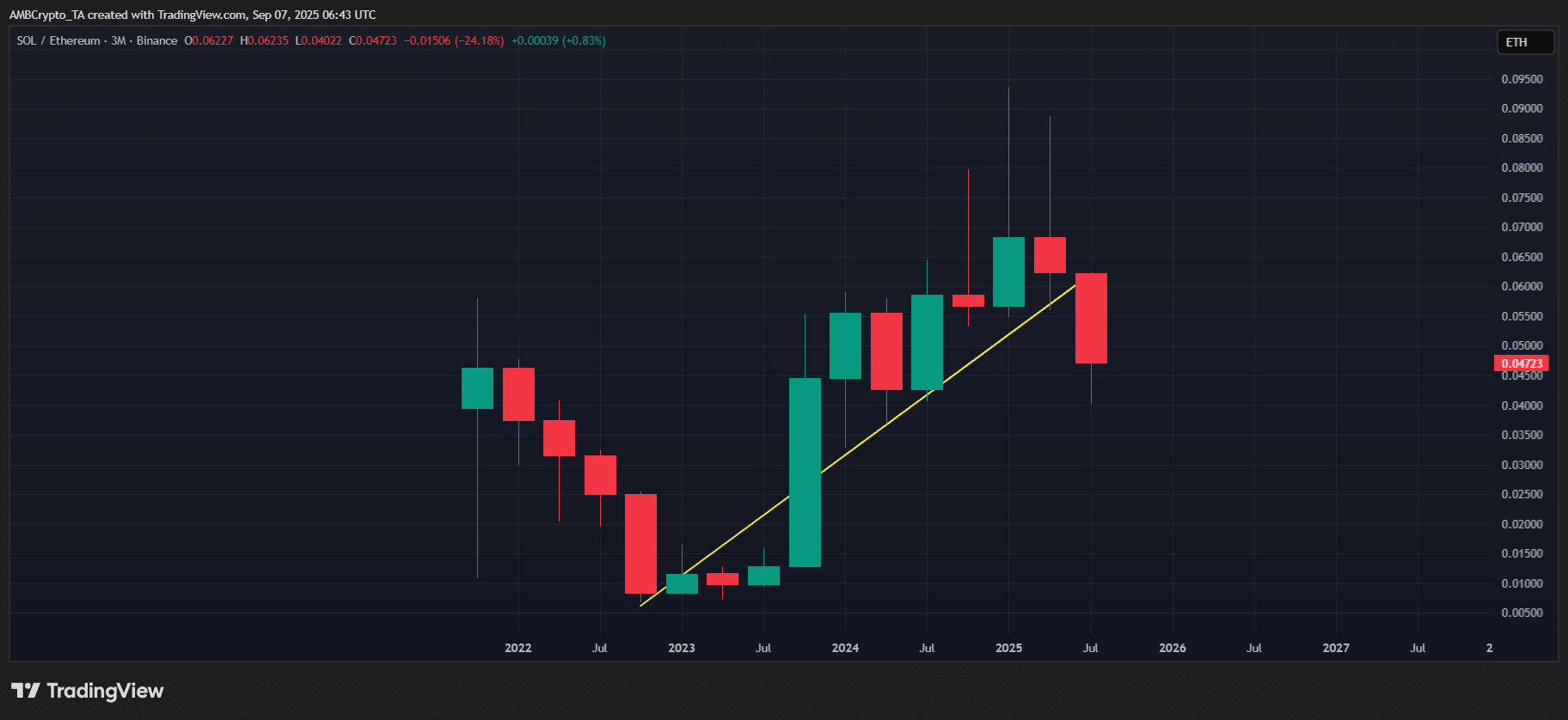Solana DEX activity shows massive on‑chain throughput but very low user retention: Solana’s DEX volume is large, yet over 96% of SOL addresses churn within a day, indicating high short‑term trading, not sustained on‑chain adoption.
-
Key point: Solana leads DEX throughput but suffers extreme address churn.
-
Solana holds ~25.36% of on‑chain DEX volume vs. Ethereum’s ~23.3%, yet long‑term addresses are a tiny fraction.
-
Data highlight: ~96.6% of Solana addresses have a lifespan under one day; only 0.2% last ≥1 year.
Meta description: Solana DEX activity reveals high throughput but weak retention — 96% address churn. Read concise analysis and key takeaways on Solana adoption now.
What does Solana DEX activity reveal about long‑term adoption?
Solana DEX activity shows exceptional throughput and ultra‑low fees, but it does not equal durable adoption. While SOL drives large short‑term trading volume, the vast majority of addresses are transient, suggesting liquidity and volume are driven by quick trades rather than sticky users or applications.
How large is Solana’s on‑chain DEX volume compared with Ethereum?
On reported on‑chain metrics, Solana and Ethereum together account for roughly 50% of total DEX trading volume. Solana holds a slight edge at about 25.36%, with Ethereum near 23.3%. These figures show liquidity is closely contested, but Solana’s edge is concentrated in high‑frequency, low‑cost swaps rather than long‑term usage.
Key Takeaways
Solana’s high DEX throughput masks weak retention. Over 96% of addresses churn within a day. What does this mean for long-term adoption?
Solana [SOL] and Ethereum [ETH] remain the dominant chains in on‑chain DEX volume, controlling roughly half of total trading. Solana currently holds a slight edge at 25.36%, with Ethereum at 23.3% — a narrow margin reflecting comparable liquidity dynamics.
On‑chain, SOL’s edge underscores network fundamentals: high throughput, ultra‑low fees, and sub‑second finality.
Solana averages roughly $0.043 per transaction versus Ethereum’s ~$0.43, enabling up to 10× more value movement per dollar of fees and making SOL attractive for high‑frequency swaps without immediate congestion.
This operational advantage drives headline DEX throughput. Yet the retention picture diverges: Solana reports over 750 million transaction addresses, but approximately 96.6% (about 720 million) have a lifespan under one day, exposing substantial address churn and low long‑term stickiness.

Source: X
Put simply, Solana’s headline metrics may overstate genuine adoption. Just over 1.8 million addresses have lifespans longer than a year — roughly 0.2% of the total address base — underlining limited long‑term retention despite massive throughput.
Why does high throughput not equal sustainable adoption?
High throughput enables many quick swaps but does not create committed users or persistent activity. When >96% of addresses are sub‑daily, activity is driven by transient traders, bots, or liquidity arbitrage, not by recurring usage from large user cohorts or active dApp engagement.
How does this affect investor and market positioning?
Solana’s Q3 DEX throughput reached $241 billion (July–August), slightly ahead of Ethereum’s $234 billion. Despite throughput, SOL’s price performance lagged: ETH posted far stronger price rallies from similar bases. The SOL/ETH ratio also suffered a notable pullback, signaling weaker relative investor conviction.

Source: TradingView (SOL/ETH)
In practice, persistent volatility and mismatch between on‑chain activity and long‑term retention expose SOL to short‑term swings. Investors should differentiate between raw throughput metrics and measures of durable network health.
Frequently Asked Questions
How many Solana addresses are short‑lived?
About 96.6% of Solana transaction addresses are active for less than one day, reflecting substantial churn and indicating that most on‑chain activity is brief and trade‑focused rather than sustained user engagement.
Does Solana’s low fee mean better adoption than Ethereum?
Low fees enable more frequent swaps and higher on‑chain throughput, but fee levels alone don’t guarantee adoption. Retention, dApp activity, developer ecosystem growth, and long‑term user engagement determine lasting adoption.
What metrics should readers watch to assess real adoption?
Track multi‑day active addresses, addresses with >1 year lifespan, sustained dApp usage, developer commits, and value locked in non‑trivial smart contracts to evaluate durable adoption beyond raw DEX volume.
Conclusion
Solana DEX activity delivers eye‑catching throughput and cost efficiency, but current metrics show weak retention and high churn. Investors and analysts should prioritize persistence metrics (multi‑day addresses, TVL, dApp retention) over raw volume when assessing long‑term adoption. For actionable monitoring, track retention cohorts and developer activity to separate fleeting volume from sustainable network growth.
